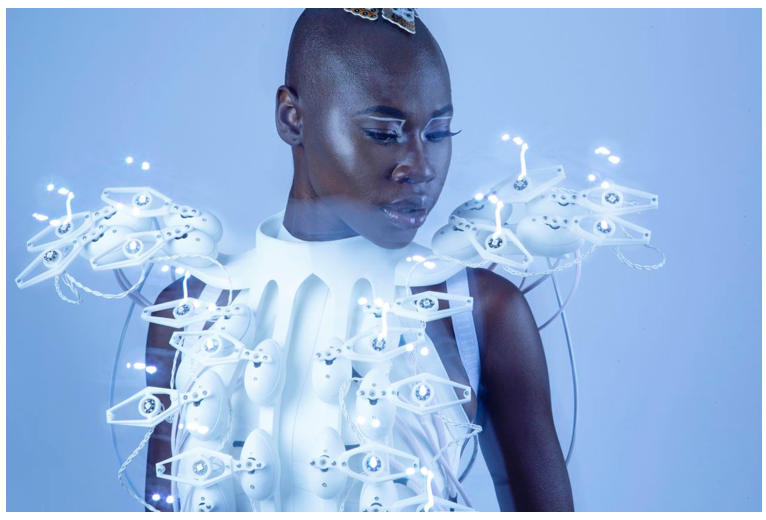Dutch “fashiontech” designer Anouk Wipprecht‘s latest creation is a dress that moves and lights up according to your brainwaves.

Feeling calm? The garment lights up a slow, soothing purple. Stressed out? The lights flicker, and little motor-driven components jutting out from the futuristic frock like animatronic wings flap more frantically.
The 3D-printed robotic dress, called the Pangolin dress, requires wearing a custom head-hugging brain computer interface that incorporates 1,204 tiny electroencephalography sensors resembling scales covering a pangolin’s skin.
The cap, which looks like something an android would wear in a sci-fi film, translates the brain’s electrical signals to 64 actuators that control little “scales” on the dress that move up and down and light up according to the state of the model. The wearer therefore partners with the dress, which behaves differently depending on whose neurons are guiding it.
With Elon Musk’s Neural Net interface company barreling along, we are sure to see a deluge of new products enabled by this brain interface.
“As each of the BCI inputs is connected to each one of the actuators, this gives a very individual animation of the dress,” says Wipprecht, who sees the Pangolin dress as a novel way to visualise the complexities of the brain.
Her past creations have included a robotic dress equipped with proximity sensors so the garment can defend your personal space if others get too close and a Faraday cage dress that takes a million volts of electricity.
The Pangolin dress will walk the runway during the annual Ars Electronica festival for arts, technology and society in Linz, Austria, this week. Because COVID-19 safety precautions limit the number of people who can gather in public, this year’s event will take place simultaneously at 120 locations around the world. You can also watch the event online.
Check out the video below to see what all the fuss is about.
Subscribe to FIB’s Weekly Alchemy Report for your weekly dose of music, fashion and pop culture news!






